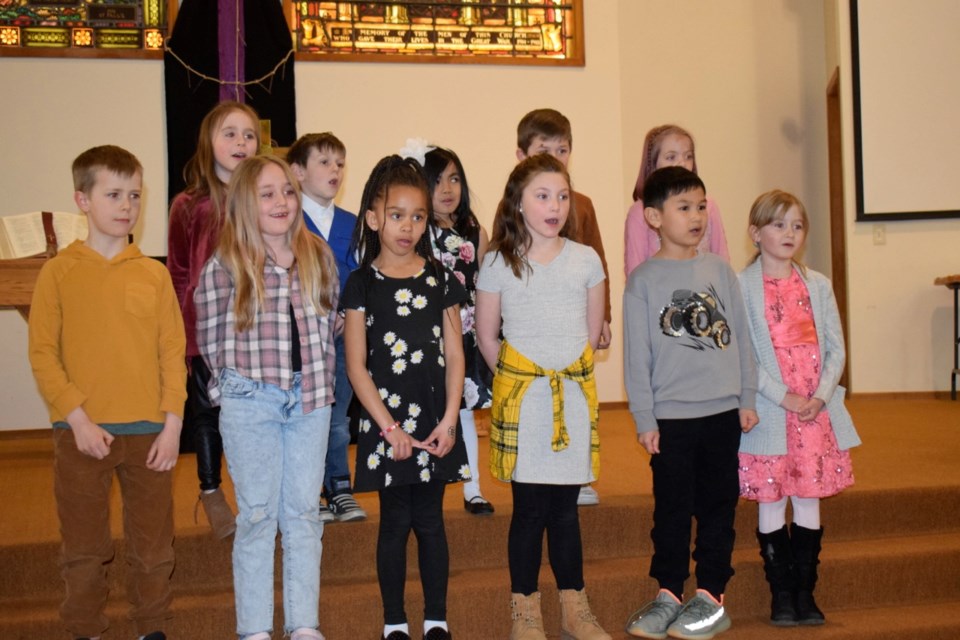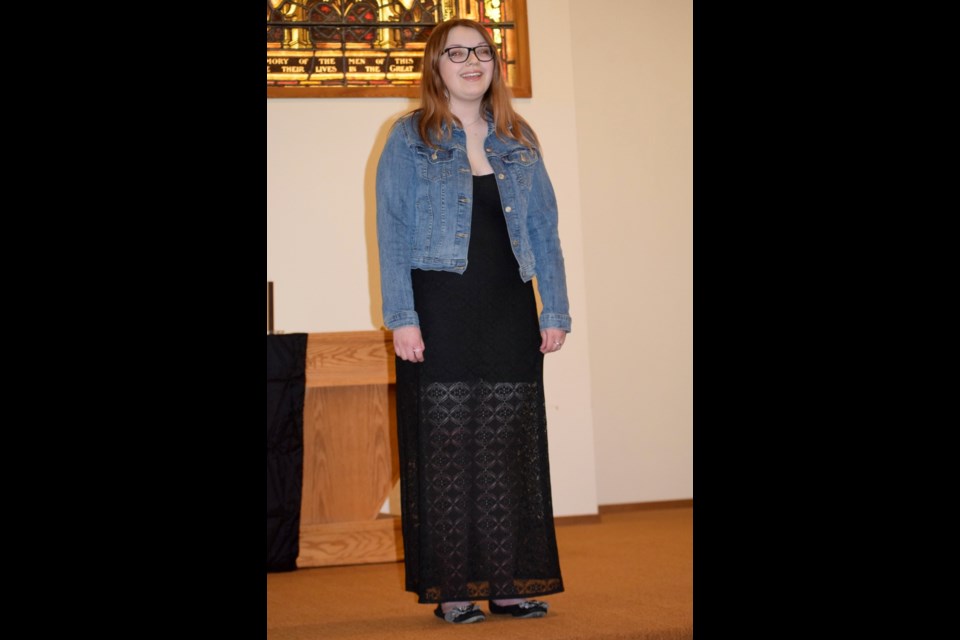ESTEVAN - The 58th Estevan and District Music Festival wrapped up with the second of two beautiful highlights evenings on Sunday, after two successful weeks filled with music and performances.
The festival's piano performances were held from March 27-30, with a highlights program on April 3. The vocal, musical theatre and spoken word disciplines took place on April 4 and the band, strings and instrumental portion was April 6. And the final accord of the festival – the highlights and awards concert for those disciplines – was held on April 10 at St. Paul's United Church.
Festival president Esther Bangsund said the main highlight this year was the return to live performances for most disciplines.
"Being in the building to hear the piano or the singing is no comparison to watching it on the screen," Bangsund said. "The festival went well this year, as the participants, teachers and parents were much happier performing live than being recorded. It was great seeing people at the venues, watching, supporting and listening to the students perform."
While it was nice to almost be back to normal, the pandemic years alongside other factors affected the festival. Bangsund said that in comparison to the two years pre-pandemic, the participation in the festival this year was just half of what it was in those two years. However, it was higher than last year during the pandemic.
"We are down in all numbers, with the numbers in piano keeping the most steady. We have had reduced numbers for the past 10 years or more, as we had close to 1,000 entries in all disciplines about 15 years ago, compared to just 277 entries this year. Numbers have been dropping since then due to many factors, including retirement and movement of teachers, as well as the redirection of specialized music teachers into more general assignments, because of staff cuts, budget, etc., which have reduced the access that students have had to music education, unfortunately," Bangsund explained.
This year most participants had an opportunity to perform live, but 13 larger groups such as classrooms and band groups submitted videos.
Bangsund noted that last year they had 248 entrants, all of which were virtual.
"That festival was a huge learning experience, especially in the areas of technology. The submission and adjudication of entries took approximately three times longer to do than live performances, which made the virtual festival much more time-consuming for the adjudicators as well as for the committee," Bangsund recalled.
She went on to explain that with virtual submissions, adjudications do all the evaluations from their homes, which in one sense is simple. But on the other hand, the evaluation process and following submission of their decisions require more work and time.
Award highlights concerts featured pieces that were chosen by the adjudicators to be performed, as those that were the best during the competition part. And while it definitely was a highlight, Bangsund said for her, listening to the kids is still the best part of the event.
"My favourite parts of the festival are children singing because I used to teach classroom music before I retired and I miss hearing singing by children's choirs. There is something about that pure sound that touches my heart," Bangsund shared.
She added that there is so much talent in this area, that the festival is always a pleasure and there is something for every spectator.
"We have a multitude of talented musicians in Estevan and the surrounding area. We had entries in piano, spoken word – the recitation of poetry, public speaking – vocal, musical theatre, violin, brass, woodwind, percussion and school bands,” she said.
“We had two performers that were district winners in one of their performances. This means they will be competing at the provincial music festival competition in Saskatoon in early June. The district winners were Jennika Linthicum in piano and Garrett Schwab in brass solo," Bangsund said.
Schwab also won the Murray GM Award for Outstanding Performance in Multiple Disciplines.
As with any music event of this scale, there were many challenges in organizing. There are many rules and regulations that they must follow, all set out by the Saskatchewan Music Festival Association, as well as many organizational bits and pieces that all have to come together to make it work
"Once we are set up to receive entries, we have to check and organize all entries into a program that is timed well. This takes careful consideration," Bangsund said. "The most challenging aspect of our scheduling this year were changes that had to be made because of conflicts in the schedules of entrants. Usually, we do not allow any changes, but because of certain circumstances, we had to rearrange some of the schedules and taking care of that is very time-consuming."
She added that COVID was a factor in a few more cancellations than usual.
There are also many tasks to do to prepare the venues, the certificates and all the volunteers needed for each day of the festival. Following the festival, days are spent preparing scholarship awards, spreadsheets and the program for the Awards and Highlights Concerts. After the festival and into the months preceding the next one, the scholarship donors in the community are contacted for each year's scholarship sponsorship and thanked afterwards for their generosity and their support of music education in Estevan.
"We are fortunate to have generous sponsorship," Bangsund said.
She also encouraged the parents of young music students to become involved in the organizing of the festival. They have members that have young children involved at the present time, but some of the committee members have been involved since their children were young, and are still involved many years after their children have graduated. Those will be looking to pass on the reins to others, Bangsund said.
The province has had a music festival since 1908, and Estevan had their first competitive festival in 1963.
"We hope to continue the festival for many years to come."







